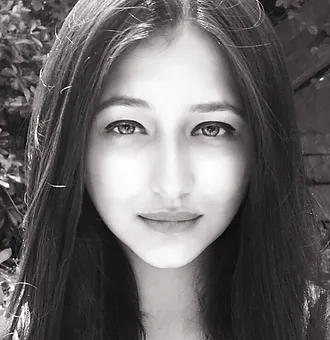
Kriti Dubey
With over 6 years of dynamic experience as a graphic designer, my areas of expertise include Branding, Web Design, UX-UI, PublicationDesign and Photography. Over the years Ive designed visually appealing and user-friendly digital interfaces to enhance user experiences and also created stunning visual assets, including icons, graphics, and layouts, to maintain brand consistency. Building a brand is not just about the design but also the story and emotions associated with it. Having delivered impactful stories for different brands and identities through visual storytelling and creative design concepts, my aim has been to blend the tangible and non-tangible aspects of design and create unique user experiences that leave a lasting impression of your brand.
- Role
Graphic Designer
- Years of Experience
6 years
- Professional Portfolio
View here
Skillsets
- Graphic Design - 6 Years
- Adobe Illustrator - 6 Years
- Adobe Photoshop - 6 Years
- Branding - 6 Years
Vetted For
- Roles & Skills
- Results
- Details
- Graphics DesignerAI Screening
- 72%
- Skills assessed :Communications, instagram stories, Meta, web banners, Instagram
- Score: 65/90
Professional Summary
- Apr, 2021 - Present4 yr 6 months
Graphic Design Consultant
Girl Rising - May, 2023 - Sep, 2023 4 months
Graphic Design Consultant
In the know- Artisan Kitchen - Mar, 2020 - Apr, 20211 yr 1 month
Graphic Design Consultant
Global Health Strategies - May, 2016 - Aug, 2016 3 months
Graphic Design Intern
Girl Rising (Los Angeles) - May, 2017 - Aug, 2017 3 months
Graphic Design Intern
Ogilvy & Mather - Apr, 2019 - Mar, 2020 11 months
Graphic Designer
Ishaan Khosla Design Studio
Applications & Tools Known
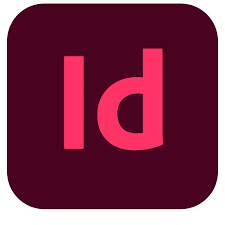
Adobe InDesign
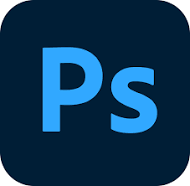
Adobe Photoshop
Figma
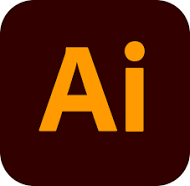
Adobe Illustrator
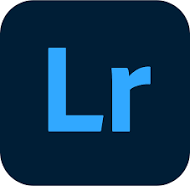
Adobe Lightroom
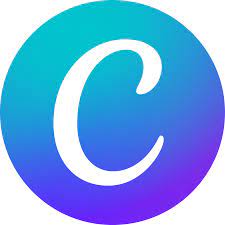
Canva
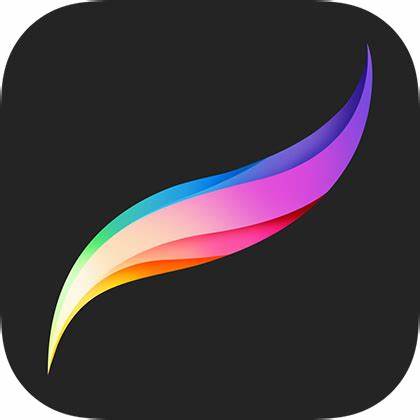
Procreate
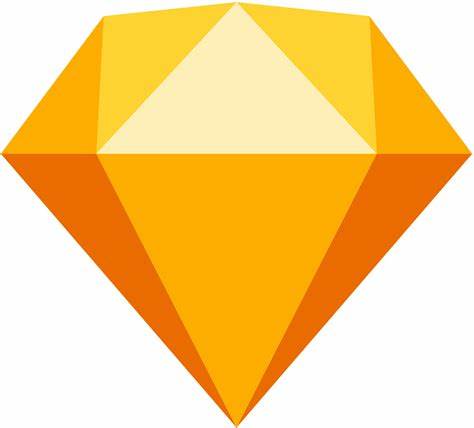
Sketch
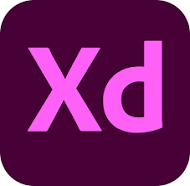
Adobe XD
Work History
Graphic Design Consultant
Girl Rising- Ideating and designing educational resources including curriculum, storybook for educators and adolescents for various country contexts
- Conducting photo documentation of on-ground programs in India
- Designing collaterals and social media assets highlighting the need for girls education for digital media dissemination
Graphic Design Consultant
In the know- Artisan Kitchen- Ideating, conceptualizing and designing their brand guidelines book and website planning.
- Creating a digital menu design
- Developing a business gifting brochure and company deck
Graphic Design Consultant
Global Health Strategies- Building a microsite covering the organizations COVID-19 efforts across its target geographies
- Conducting a photo documentation series for a Bill and Melinda Gates Foundation supported project on family planning in Uttar Pradesh and Bihar
- Ideating and designing the organizations first ever coffee table book demonstrating the stories of change
Graphic Designer
Ishaan Khosla Design Studio- Worked on the designing a wellness and health website- Vana (now renamed as Six Senses)
- Supported the development of Loka Bihar website -Imagine the Impossible
- Worked closely with Ishan Khosla on type craft initiative project
- Supported the designing of a coffee table book - 'One Continuous Line' that reflects the life philosophy of Aditya Prakash, an authority on modernism and Indian Architecture
- Was responsible for day to day program management including coordination with vendors as well as clients
Graphic Design Intern
Ogilvy & MatherConceptualized and executed ideas, designs and creatives for brands like Bata, Max Life Insurance, Mother Dairy.
Graphic Design Intern
Girl Rising (Los Angeles)- Managed photoshoot for a global campaign. Created social media assets and designed brochures, booklets and event collaterals.
- Regular design edits/ updates on Girl Rising Website
Achievements
- Please refer to my portfolio to see some of my work: https://www.behance.net/kritid
Testimonial
Ogilvy and Mather
Avik boseShe is very hardworking. Has performed way beyond our expectations. Has imaginative thinking. Will be an asset to any organization.
Girl Rising
Richa HingoraniI have been working with Kriti for over 5 years now and she has designed a host of assets for both India and global programs. Kriti is highly skilled, adept, and a quick learner. I particularly appreciate her attention to detail, her design sense, and her recommendations which always keep the end user at the centre. Her creative bend of mind and adherence to timelines make her a treat to work with. Having her on the team is an asset like no other.
Major Projects
Brand Identity and Packaging design
InTheknow- Artisanal KitchenIn The Know - Artisan Kitchen ( https://intheknowkitchen.com/ ) churns out fresh, made-to-order, low-sugar, zero preservatives Truffles, Chocolates and Desserts. They also specialize in Keto, Gluten Free and Sugar-Free products and also do home delivery all across Delhi NCR. I rebranded their packaging and branding keeping their customer base in mind. This includes a new color palette, typography, brand guidelines book, cake brand signature, social media templates, menu design, gifting brochure, luxury packaging and overall redoing the visual elements of the brand. Here is the link of the project for reference: https://www.behance.net/gallery/183647093/Brand-Identity-Brand-Guidelines-Artisan-Kitchen
Social media Collaterals
Mr. DairyThis was a freelance project where i designed social media assets for Mr. Dairy- House of Nanak ( https://mrdairy.in/) It is a farm in Gurugram that supplies fresh A2 milk, which is 100% pure and unadulterated, right to your doorstep. They also supply other A2-based products like ghee and paneer. The idea was to create fun, witty, and vibrant designs keeping the brand guidelines intact. Here is the link of the project for reference: https://www.behance.net/gallery/141105523/Social-Media-Mr-Dairy
Wellness and health website (Vana) (UX-UI)
Ishan Khosla Design studioHad the opportunity to work on designing the website for Vana Foundation (now renamed as Six Senses)and it's sub-site Vidyaloke. Vana is a wellness retreat luxury resort situated in Dehradun, India. I worked on designing the user interface, visual style, color palette, and other elements of the website. It was one of the extensive projects i worked on which also involved working with several stakeholders including UX designer, Web developer/ coder and the client.
Here is the link to the project for your reference: https://www.behance.net/gallery/140442285/Website-Design-UX-UI-Wellness-and-Health
Education
Bachelor in Design (B.des
SRISHTI INSTITUTE OF ART, DESIGN AND TECHNOLOGY (2023)
Interests
AI-interview Questions & Answers
Could you help me understand more about your background by giving a brief brief introduction of yourself? Sure. So my name is Kriti Dubey, and I have been doing graphic designing since the last 6 years. I graduated from Shishti, Bangalore, Um, in 6 years ago and after that, I started my journey from an ad agency, which is Ogilvy. And I think it exposed me to the culture of uh, what working like it is in an ad agency. I worked there On really big brands like Max Life Insurance, uh, Mother Dairy, where I created a lot of, uh, creative campaigns for them. And, also, I worked on really tighter deadlines. Everything that we would design would end up showing up on the screen the next day or on billboards, Which was pretty amazing. And I also got to work with a lot of people. There was there were larger teams. Uh, I worked With, um, client servicing people, I worked with creative heads. I worked with clients directly, so it actually exposed me to that world. After that, I actually ended up working on a smaller studio because I wanted to take up more responsibility and be more hands on. So I worked at Ishan Khosla Design in New Delhi, where I worked on a lot of publication designs and UX UI websites, Where I design coffee table books, uh, did a lot of creative collaterals for social media and Curriculum designs and reports where I got in-depth understanding of layouts, color theory, and all of that. And then after that, I started I started getting a lot of freelancing jobs. So I decided to take up freelancing where I did a lot of consultancies And worked with independent organizations, uh, NGOs and international organizations as well where I got to explore photography. And I went around outskirts and interiors of UPNDihar where I Covered interviews of people and did a photography with a photography session with them. Along with that, I created a graphic design book, which Was shared publicly with everyone and the other thing that I started doing was a lot of UX UI. I got more inclined towards that. So, yes, curriculums, reports, books, and, uh, also working with NGOs actually Help me understand the need of women empowerment as well. So yes. So that was my recent work that I've been doing so far.
How do you approach color palettes for brands that have limited or no defined color guidelines? Well, I think that it is very important, firstly, in graphic design or just in general design being a designer to understand color theory. And I feel like every color represents a certain mood and, um, like, say, for example, red reflects a food industry or urgency blue reflects calmness or subtleness. So I feel like with so many years of experience, I've got an understanding of how color palette works and what color is supposed to be used in different aspects based on the branding style. So, I mean, the possibility is endless, but also every color has a certain mood. So it's just important to understand that and keeping that in mind using color palette and colors in general with brands can be easier because it reflects that in the branding.
Describe a complex design challenge you have faced and how you overcame it while heading to strict brand guidelines. Alright. Um, so a lot of times it has happened that because I'm also a freelancer and I've worked as a freelancer and do done a lot of consultancy several times where I've worked with clients where I personally have not Like the end product myself, but that is something that they were looking for So it is not something that I would always enjoy designing But it is important in the end to create something that your client is also satisfied with. But having said that, it's also important to Make sure that the design that you're creating is also something that you love and something that you can also show up on your portfolio or contribute On your maximum level. So it's important to come in, um, in between situation where you're able to push your boundaries, but at the same time, Keeping sure that the brand guidelines are maintained. And at the same time, the client is happy with the product because in the end, they are our customers And they are who we're catering to. So we can create endless designs and create designs based on what we like, but the client has to be happy. And, you know, being in that's the biggest difference between being an artist and a designer is that when you design, you design with a purpose. It's not just limited to creating beautiful visual designs. It's also important that It has an impact. It represents what we're trying to say. So it's just overall important as a designer To take responsibility to make sure that the problem the bigger problem of the brand is being solved by Creating this design as opposed to just making it look pretty.
Can you provide examples of your experience with user interface design for web applications? Yes. Sure. So, uh, can you provide examples of ex of your experience? Okay. So like I said, uh, since very early on, I started working on uh, UX UI projects. And to be honest, my final, uh, year project of college, which was interesting in 2018, was also uh, website and UX UI based project where I created a website called Farmers and an app uh, Farmers, which was about delivering products, uh, vegan products to all around people in India, and that was actually my beginning uh, to the world of UX UI and Right after that. I worked on several websites. One of them being the 6 senses uh, which was a health and wellness website where I created the landing page, the icons uh, use the photographs based on what is right for the design and and then I also worked on several softwares uh, like XD sketch and eventually started working on Figma, which gave me so much possibility of working in a collaborative manner as uh, XD and sketch, although they are great Softwares to work on. They're not as collaborative as Figma. So I feel like uh, Figma is a really nice software where you can work with UX web people and you can show stuff to client and it's a very good collaborative uh, site to work on. Along with that, I also worked on a lot of app designs girl rising app, which is one of the things I design, which also, like, uh, gave me an idea of how basically, I feel like I've worked on very uh, different projects when it came to UX, why be it from the food industry, from health industry, from NGOs. So uh, as a designer, it's very important that although, like, you're greater design and you may have a certain personal style, uh, but just in when it comes to, um, designing, it's important that you design keeping in mind the brand guidelines firstly. Uh, and secondly, to make sure that your personal style does not come across in every design you make. So they have to be very independent uh, and unique in its own way and overall, my experience with UXUI has been pretty good. I'm just learning and learning and there's still so much to learn. But at the same time, I think, like, with over the years, I've become more fast paced and I can work on tighter deadlines. I've seen myself uh, create designs that I would take few more. Like, say, I would take 5 hours. Now I take 3 hours, but that's just only because uh, of working on so many projects. So
How do you ensure that text elements are readable in an Instagram story ad? Well, the first and the foremost thing you do is when you create a design, the first thing as a designer we've been taught even in a design college is to make sure that the text is legible or readable. So you always have to create prototypes. See, first make a prototype and put it out there without obviously, I mean, without exposing it to the audience, you always have a trial round where you see if the size works fine. In case the size is smaller or bigger, you always have the time to go back and make those changes. But having worked in the design industry for so long, I feel like I would nag, and I just know what sizes work. Uh, but yeah. I mean, I feel like I mean, the trial is always important before putting anything out there. I feel like because even a small thing can make a huge difference in terms of how people are perceiving your work. And the thing about being a graphic designer and the work that you put out there, it's important for people to instantly get attracted towards it. And if there is a text which is small or, uh, not readable. They're instantly gonna go to the next story or the reel. So I think that's the first and the foremost thing to make sure that what you wanna say comes across well in the right size, the right text font, and also the font that you use. Because, um, I mean, when you're working, say, online or digitally, it's good to use on serif fonts as it has better legibility and you can read it better as opposed to a serif font, which takes longer to read on on digital softwares. But serif fonts work really well on print. So I guess yeah. In terms of size and everything, it depends. I mean, there is no one particular size. If it's a headline, it can be bigger. If it's a body copy, it can be smaller. So I feel like everything requires, like, you create a design and then you see it in that aspect ratio to make sure that this what you have in mind looks exactly like that and not less or more.
How do you handle tight deadlines when multiple design projects are due at the same time? Oh, I think I answered one of these before, but, um, I feel like something about tight deadlines is, Uh, I learned that very early on because I worked in an ad agency where where, uh, we had to Work on really tight deadlines where we were working on several projects. 1 being, like, social media stuff, the other being print banners, And then the other being UX UI. How do you make sure to get all of it work on the same day? I feel like, Um, it's really really important to start your day by having a list of things and making sure you give time to every project. But also, They all don't necessarily require the same amount of time. You need to prioritize based on what needs to go out first And especially when you're collaborating and you're working with other people, you need to know how to, Work on certain things and also how to delegate work because in the end, making sure that the product Is good and it reaches on time is most important. So just I think having a good schedule, waking up and creating A list of things and prioritizing work is the most important.
Which element do you prioritize when incorporating bright guidelines into a design? So which element? I feel like you can't just say 1 element as there are So many elements that are important when it comes to designing brand guidelines. I mean, be it Aspect ratio from the logo to the color palette, the color theory, the font that you choose, The do's and don'ts that you show that how a logo is supposed to be used in your brand, how a photograph will be used in your brand guideline. I feel like All of these elements make a brand guideline book. So you can't just say 1 element as important as All elements together make up a great brand guideline book. So having said that, If you ask me, I would say color palette, uh, color palette. How do you work on photographs and text? The rights and wrongs of working with the logo. And And, yeah, how do you use your logo on different collaterals? And if there are any other elements that you would wanna add along with logo, be it like iconography that you use on packaging. So all of these elements are equally important. And, of course, it's very subjective to What brand it is and who you're working with and what's your end product? But I would say it's not one element, but Different elements that make up a brand guideline book and a good design as well, or a successful one.
Explain how do you ensure consistency across different designs projects for the same client. So, I mean, I just feel like especially when you're working with a single client, the first and the foremost thing I mean, I would like to give examples from my work. I have worked with Ogilvy where I worked on different brands, and there were different band guidelines. But I've also work with organizations like Girl Rising or Global Health Strategies with every design I created. Of course, I had the creative freedom to explore designs, but at the same time, I had to make sure the core and the brand guideline. The basis of it is content and it is what it is. So, I mean, you just have to make sure that the code does not get shaken up. And the the things that you're designing, you have to make sure that it reflects the brand for what it is and you don't start changing the brand image by changing the design of it. So I feel like there always be certain brand guidelines which you have to adhere to no matter what. And then there will be some flexibility of working with other aspects of design within that. So and for any brand to be timeless or consistent or good, it is very, very, very important to have all the design collaterals that you're designing when you're representing a brand to have that consistency. So whether be it, uh, a certain color palette that you use that you make sure you use it throughout your designs. A certain font that you use, make sure you use it throughout. Or say when you're making a social media post, there could be like a border that you use constantly. So it just I mean, that is also important. Although people may think it is repetitive sometimes, but then it's also important to create that sort of a thing because there are endless brands in today's time. And it's very easy for people to forget brands. So that brand recognition is very important and to have their own unique factor and having that consistently throughout different collaterals helps the brand. So being a brand designer and visual designer myself, I feel like that is the first and the foremost thing when it comes to creating any design. And then then the second thing is how can you push the boundaries of other aspects of design, be it in terms of advertising or promotional stuff or creating newsletters or. I mean, I feel like it's a mix of both. And there is, anything extreme can go bad. So I just feel like you need to keep sure that your brand guidelines are intact when designing stuff. But at the same time, don't limit yourself when designing other aspects of the work that you are doing.
How would you go about creating a cohesive design series for a client's marketing campaign with varying asset styles and dimensions. Um, how would I go about it? Well, I feel like the first thing you would I would do is set a brand guideline for all my collaterals. When you're working on different collaterals, it's very easy to get swayed away by different themes. And because everything I mean, there's so much out there that and also everything is so inspiring that you want Your favorite designers work to also reflect in your work or you you like something the other day and you wanna kind of get that in the brand. But Having said that, you have to make sure that especially working on several collaterals offered same brand that the brand guideline is intact, and everything you design in the end looks they come together well. So be it working on a social media post or say designing something on LinkedIn and for a post there or a Facebook post or, say, a website banner. Of course, they will be different in its own way, especially when you're working with different aspect ratios. And also, um, when you're working with different aspect ratios, you also have to use different photographs when it comes to that. As not Not the same photograph might not work on all different platforms. So I feel like there should be that understanding. But Like I mentioned earlier as well, like the color palette, the fonts that you use has to be consistent. That is just the prerequisite of working with any brand or any good brand, I would say. And the rest of it, I feel like it is open to x. I mean, it depends what the client demands, honestly. If a client is okay with me if they want me to, you know, explore the design style of visual language than what they were doing before. I would give them that. If they want me to stick to their visual style and create something in the same manner or the same sort of work they want me to do that they've been doing before, I would give them that. So I guess the first thing is to listen to the client carefully so that they get what they want and the client is happy. And the second thing is you have to make sure you're happy as well. So yeah.
